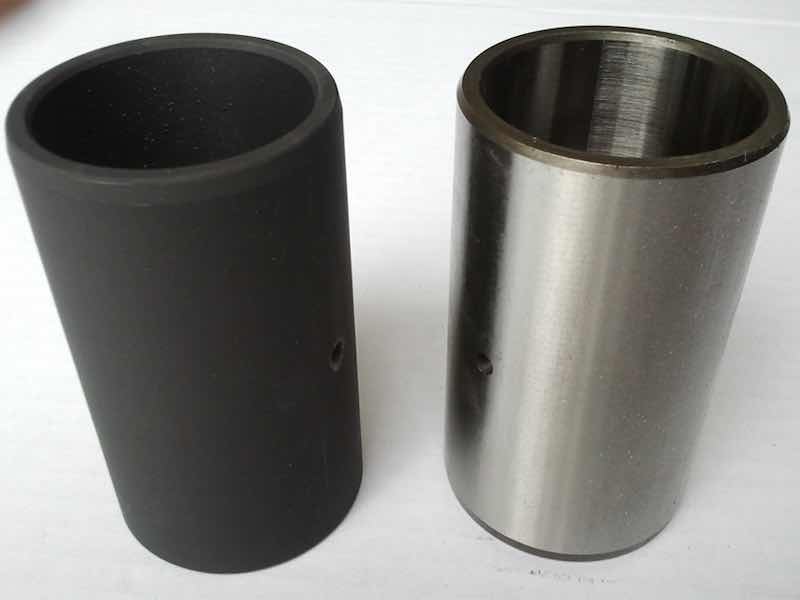The applications of paints and powder coatings have become more pronounced over the years.
 Stephen F. Rudy CEFBeginning in the 1980s, it was estimated that organic coatings had in the time span replaced plated finishes by approximately 65%-80% on selected types of parts.
Stephen F. Rudy CEFBeginning in the 1980s, it was estimated that organic coatings had in the time span replaced plated finishes by approximately 65%-80% on selected types of parts.
A variety of parts that comprise products in consumer, automotive, aerospace, military, and construction abound, along with other end users. In everyday use, we are accustomed to seeing and using consumer items such as shopping carts, shelving, and especially the vehicles we ride in. Organic coatings continue to be in demand and popularly applied.
Let us review some basic facts and guidelines for the common types of phosphate coatings.
What are Phosphate Coatings?
After surface preparation (cleaning), metal parts are immersed in, sprayed, or brushed on with an acidic solution, specially blended to react with the basis metal. This reaction forms a product that is a modified metal phosphate species. It can be referred to as a crystalline or amorphous material. The crystalline deposit that forms consists of insoluble salts that continually form on the metal part surface. Amorphous coatings are not crystalline but rather of a different formation. This deposit also forms on the metal parts’ surface. In both instances, there is a minor etching of the basis metal.
The coating forms a tight bond to the metal surface. It can be relatively thin, ranging from approx. 40 mg/ft2 to upwards of 4,000 mg/ft2, but uniform and dense. The coatings provide an excellent base for paints and powder coats, corrosion protection, accept lubricants and conditioners, enhance abrasion resistance, as well as accept waxes and rust-preventative oils. Because of their nature, phosphate coatings are quite resistant to chipping and abrasion.
The main types of phosphate coatings are iron, zinc (light to heavy), and manganese. Light to moderate zinc phosphates is crystalline, developing a range of coating weights from 100 to 1,000 mg/ft2. The coating tends to be smoother as the weight per square foot decreases. These coatings provide the best corrosion protection versus the other phosphates. That is why they are ideal as a pretreatment before paints and powder coats.
In addition, they are excellent surface modifiers prior to cold forming. Having superior lubricant and drawing compound capacity and holding capacity makes them ideal for metal extruding and forming dies which last longer due to reduced friction. This superior capillary action readily absorbs and retains the fluids mentioned.
The application of phosphates is specific to the type of coating. Iron phosphates are formed by either immersion or spray. Manganese and zinc phosphates are normally formed by immersion. The process by spray constitutes low foaming tendencies. Robust formulations of spray phosphates also contain hard water conditioners that effectively prevent the plugging of spray nozzles. The three phosphate types are acidic, with zinc phosphate being more so. Each process requires heating to maintain a preferred temperature range, optimizing the reaction on parts. In addition, each process forms sludge, which requires periodic decanting, or new bath makeup.
Iron phosphates are employed in multi-stage spray lines or in a cycle of dip tanks. Zinc and manganese phosphates are in immersion lines.
Thickness
Heavy zinc phosphate coatings, grey in appearance, normally range from 1,000 to 3,000 mg/ft2 in thickness. These phosphate coatings are crystalline and dense but more porous than lighter coatings. The conditioned surface is coarser. Oils and waxes readily absorb these crystalline structures. These heavier coatings are a build-up of crystal upon crystal. This mechanism of formation, a result of looser bonding, makes the coating more susceptible to physical failure. One fact that is common to zinc phosphate treatments is that proper cleaning to remove oils and grease beforehand is mandatory. Zinc phosphate solutions have no soil-cleaning capacity in this regard.
Iron phosphate coatings are the lightest weight, ranging from below 40 to above 80 mg/ft2. These coatings are amorphous, not crystalline. The color is typically blue to iridescent. Because they are non-crystalline, iron phosphates are not absorbents for oils, lubricants, and waxes. Rather, the iron phosphate coatings provide a corrosion protection underlayer and a bonding base for organic coatings. Industrial formulations of iron phosphate concentrates are available as either stand-alone combination cleaner – phosphate or as a phosphate that follows an alkaline cleaning step. Compared to zinc phosphates, the iron phosphate process is more economical, both in chemical use and with reduced energy requirements for heating. Additionally, analysis and process operating parameters are more easily achieved with iron phosphates.
Manganese phosphates are typically the heavier ones, with a thickness range of 1,000 to 4,000 mg/ft2. The crystalline structure is quite coarse and black in color. The unique crystalline structure improves the retention of rust-preventative oils and lubricants. Subsequent corrosion protection is very good, along with minimizing the galling of moving parts.
Of the three phosphates, iron phosphate by analysis is the simpler control procedure. Titration and pH measurement. Zinc and manganese phosphates require three separate titrations: total acid, free acid, and iron. The ratio of total to free acid is critical.
Applications
Zinc phosphate on steel can be applied for paint adhesion, adhesion of organic coatings, rust proofing, oil retention, and cold forming. Aluminum and zinc surfaces (plated zinc) can also be treated for the adhesion of organic coatings. Another popular use of use phosphate is coating wire and tubing in drawing operations. Heavy zinc phosphate on steel is preferred for oil retention and rust preventatives.
Iron phosphate is applied to steel, zinc (plated zinc), and aluminum before the application of organic paint and powder coat.
Manganese phosphate is applied to steel for improved wear resistance. Specifically, engine parts, such as camshafts, gears, and piston rings, benefit from the coating’s protection, especially at performance break-ins. This protection is to prevent galling and control the wear of the moving parts.
Stephen F. Rudy, CEF, is president of Chem Analytic and has written extensively about the finishing industry. Visit www.chemanalytic.com or call him at 917-604-5001.



































